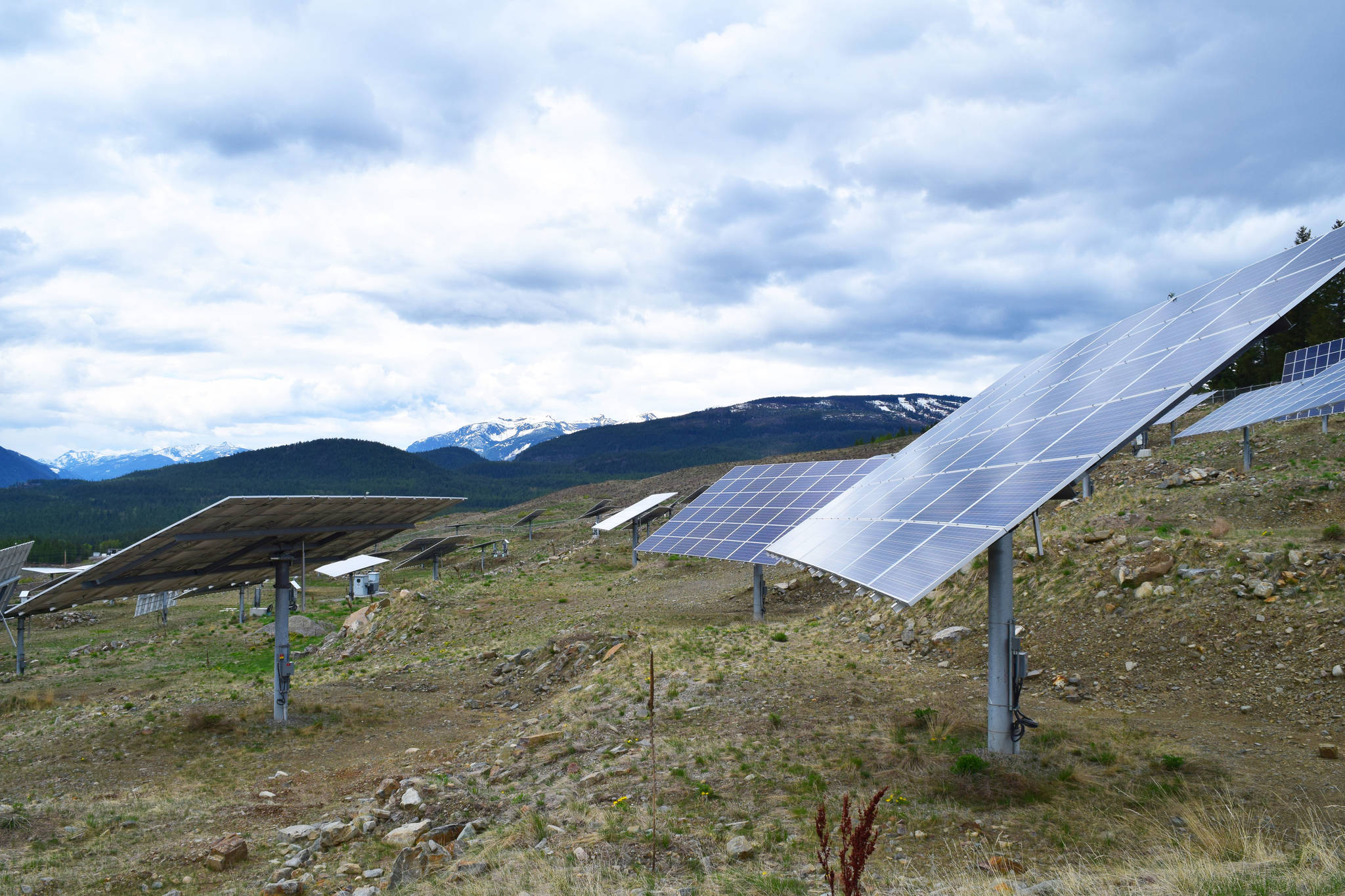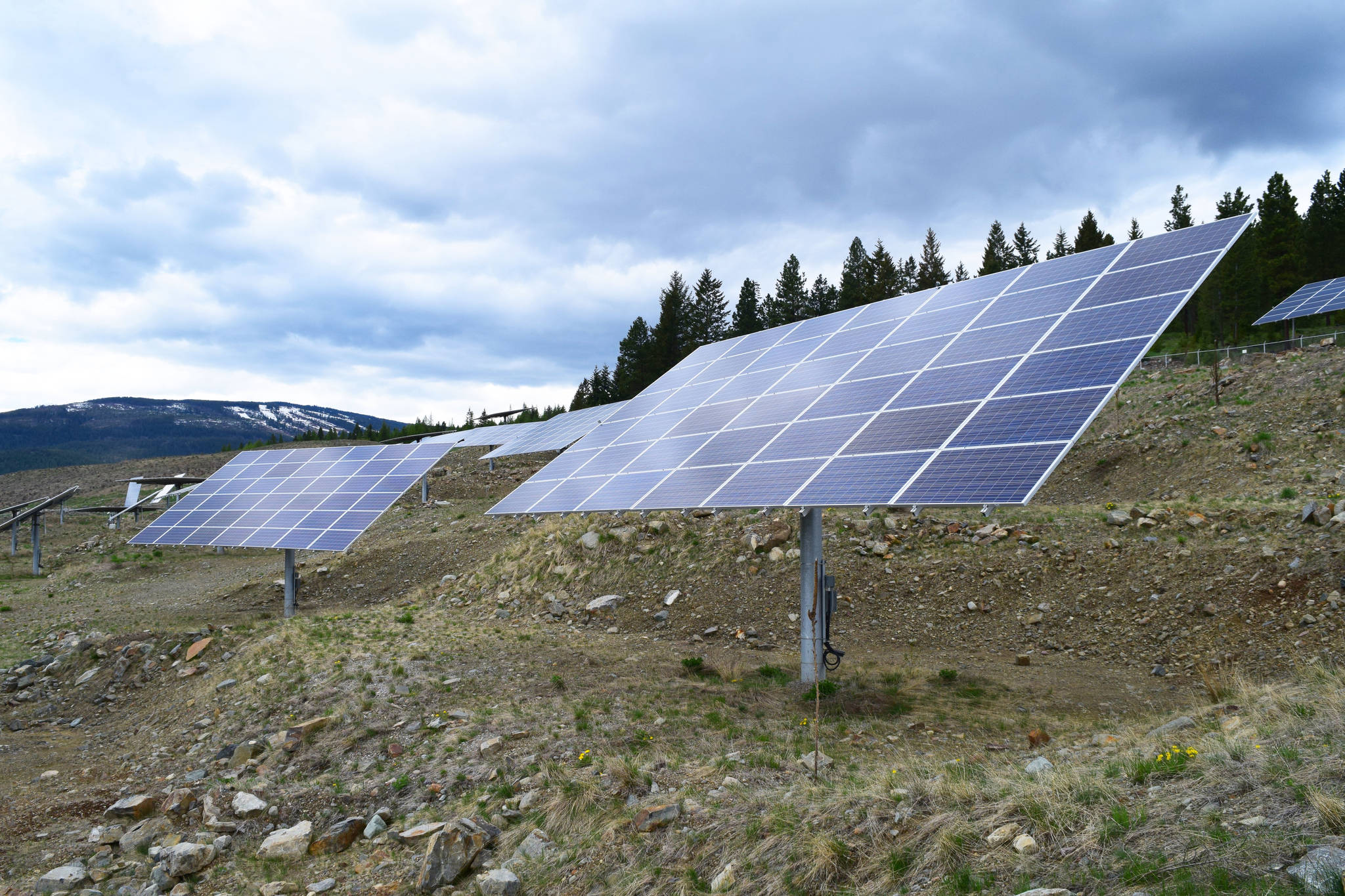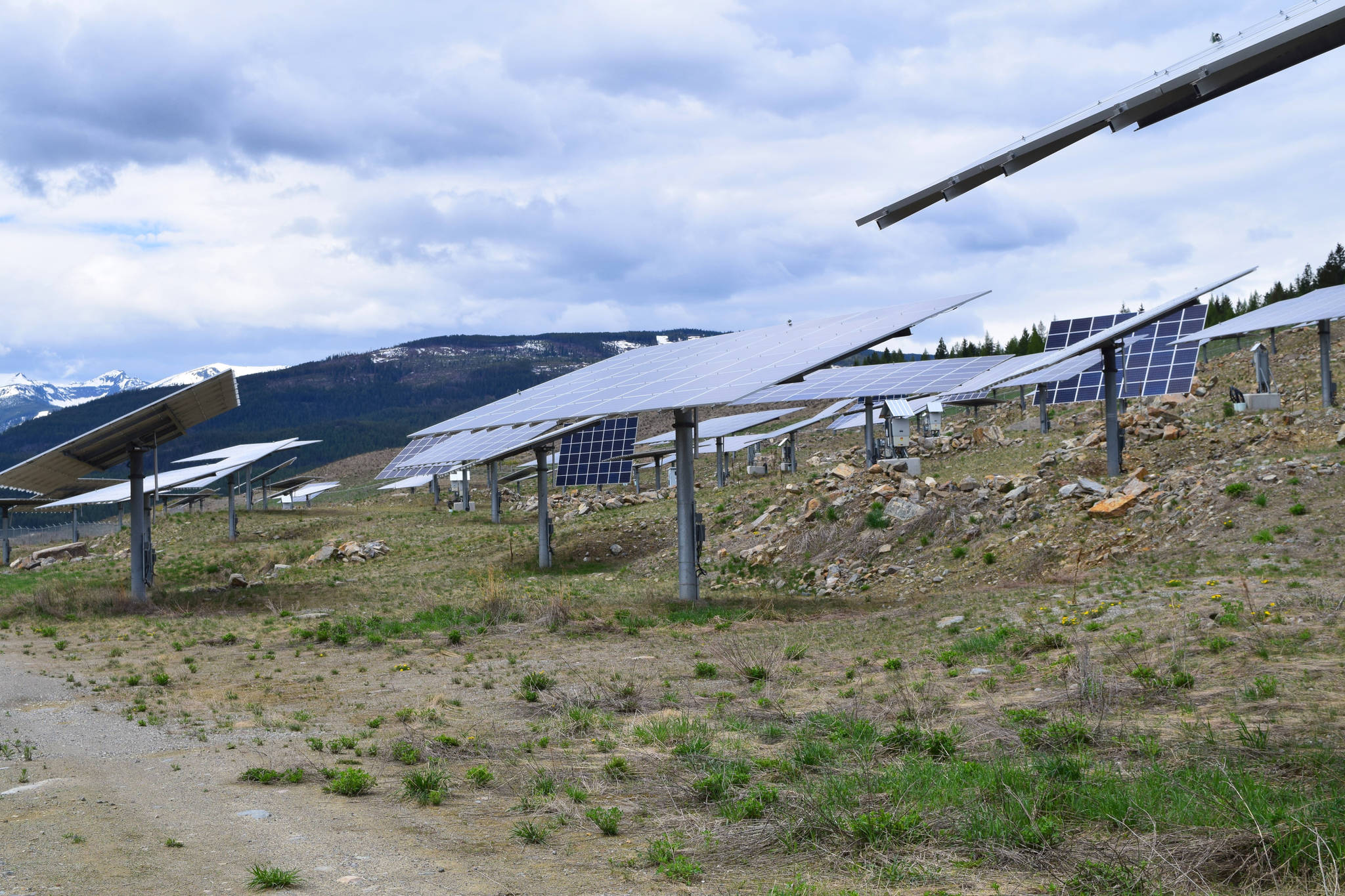On Friday, May 11 the Bulletin, and other media outlets, got an exclusive tour of the Kimberley SunMine. City of Kimberley Chief Administrative Officer Scott Sommerville hosted the tour to fill us in on the progress of the SunMine to date, and plans for the future.
Sommerville explained that from June 22, 2015 to the end of April 2018 (almost 3 full years of commercial operation), the SunMine has generated $530,324 in revenue on 4,908 MWh of electricity generated.
“After paying for the debt on the $2M borrowing issue and operation and maintenance costs, any surplus goes into a reserve for the replacement of SunMine equipment,” explained Sommerville.
At the end of 2017, there is $32,746 in the SunMine equipment reserve.
Sommerville added that there are 36 different rates paid for the electricity that is generated by the SunMine, dependent upon two factors. The first factor is the month of the year. Rates paid in May and June are much lower than those paid in December and January. The rates are lower when hydroelectric power is plentiful, and higher when water levels are lower. The second factor is time of day, divided into Peak (6 a.m. to 4 p.m. and 8 p.m. to 10 p.m.), Super Peak (4 p.m. to 8 p.m.) and Off Peak (10 p.m. to 6 a.m. and Sundays).
“The most profitable months for the SunMine are July and August, and the least profitable months are November, December and January,” said Sommerville. “December in particular has been very disappointing compared to projects.”
Sommerville says there is potential for expansion with the SunMine, including a contract with BC Hydro to provide a second megawatt of electricity.
“The original plan was to build 2MW, but was scaled down to 1.05MW due to budget constraints,” he said. “The City has been approached by dozens of private energy companies and investors interested in assisting with the expansion of SunMine beyond 1MW. The issue is that there is currently no demand from BCHydro for the electricity (beyond the second MW), most likely due to the abundance of hydroelectric in our region and the decision to move ahead with Site C. It is possible that SunMine might be sold in the future; to keep the City’s promise of not costing taxpayers operational dollars and to further expansion of the solar industry in our region.”
An innovative Clean Energy Fund Grant for $1 million was the incentive for the tracking system.
“If you factor in the grant, and the 36 per cent extra power generated by tracking the sun, it made sense,” said Sommerville. “Without that grant, and knowing what we know now about moving parts in this climate, we want to fill that second MW with a fixed system, which requires less maintenance, less power generation to the panel, but it would be really interesting to learn more as a second prototype.”
In terms of publicity from the SunMine, Sommerville says that the City never necessarily intended the project to be a tourist attraction or otherwise, however since it’s inception the City has had almost 2,000 visitors to the SunMine site, from Engineers to elementary school students.
“The demand for tours has been overwhelming and somewhat unexpected,” Sommerville said.
Tod Caton from Simply Kimberley and Resort Tours has been assisting the City with meeting the demand for ecotours. If you wish to find out more information or book a tour, Caton can be reached at 1-844-474-6759. For further information or photos, contact Sommerville at 250-427-9668 or at ssommerville@kimberley.ca.
How it Works:
Historically, Kimberley receives approximately 300 days of sunshine, the most in BC.
4,032 Photo-voltaic (PV) Modules: Solar radiation (as photons) strikes a PV semi-conductor to produce a difference in electrical potential (voltage).
96 Solar Trackers: Each tracker is comprised of 42 PV panels mounted on an aluminum table-top, and mounted on a steel mast, attached to a steel root buried 2 metres deep. Dual axis tracking improves energy generation by 30 per cent over fixed systems. Light sensors optimize the orientation of individual trackers to maximize energy generation; effective under snowy or cloudy conditions for example. Each tracker generates direct current (DC) at 1,000 volts.
32 Inverters: Each inverter converts direct current power (DC) generated by modules into three-phase 480 volt alternating current (AC) power. Decentralized string inverters serve three trackers each; enabling performance monitoring and maintenance at the tracker level. This improves energy performance and minimizes down-time due to performance issues or maintenance at any single point.
Four Combiner Boxes: The combiner box, like a residential electrical panel, combines the output of multiple inverters for connection to the distribution transformer. Energy from eight inverts flows into each combiner box.
One Power Distribution Transformer: The oil-filled transformer transforms the 480 volt energy up to 7.2kV, a medium voltage level which allows for more power to be efficiently transmitted on smaller diameter cable in the distribution line.
One Power Distribution Line: The power distribution line is 1km long to the Stiles Substation.
Two Substations: Substations are comprised of transformers, switchgear and protection components, including circuit breakers and fuses to control, protect, and isolate equipment and interrupt short circuits. Once into the Stiles Substation owned by Teck, excess energy is transformed up to 69kV for efficient transmission. The energy then flows into the adjacent Kimberley Substation owned by BC Hydro through which it is distributed to consumers throughout the BC Hydro grid.
This energy then provides electricity for 200 homes.
Interesting Facts:
The SunMine is a $5.3 million solar project. The SunMine construction began in the summer of 2014 and began commercial operation on June 22, 2015.
The panels (solar trackers) measure the weight of snow during the winter. When the snow reaches a certain weight the panels perform a snow dump, flipping up and shedding most of the snow automatically.
Two Engineers employed by the City are responsible for the maintenance and monitoring of the SunMine.
The Kimberley SunMine houses the only tracking system in Canada.
The project is supported by Teck, whose involvement, first announced in 2011, includes providing land and site infrastructure as well as a $2 million contribution.
SunMine is located on Teck’s former Sullivan Mine Concentrator site, which has been fully reclaimed.
A 2011 referendum saw an overwhelming majority of Kimberley voters support the City borrowing $2 million toward construction of the SunMine. The City and its partners spent three years working to secure funding, negotiate ownership, undertake due diligence and prefeasibility studies, and complete 17 agreements with eight different organizations.
Award-Winning Project:
* 2015 Community Excellence Award for Leadership and Innovation in Green Initiatives - UBCM
* 2015 Community of the Year - Clean Energy BC
* 2015 Sustainability Award - Association of Engineers and Geoscientists of BC
* 2016 National Award for an Engineering Project or Achievement - Engineers Canada
* 2016 Collaboration Award - Community Energy Association Climate & Energy Action Awards
* 2017 Clean 50 Award - Outstanding Contribution to Clean Capitalism
* 2017 Brownie Award for Best Large-Scale Project - Canadian Brownfields Network


